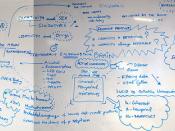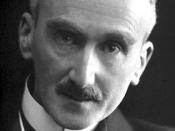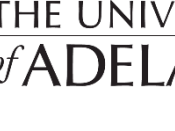The sense of being stared at
Have you ever had the feeling that someone is looking at you even though you can't see him or her? Many people have had the urge to turn round due to the feeling that someone is looking at them from behind, and then when they look they see that they were correct. Surveys carried out by Braud, Shaffer and Andrews (1990) showed that 70 and 97% respectively of the population of Europe and North America have had this sensation (Sheldrake, 1998).
Even though many people seem to have had this sensation, not very much research has been done into the participant. An early study done by Titchener (1898) showed that students, who said that they could sometimes say when they were being looked, could not tell under the experiment's conditions. Titchener, however, was a sceptic and so these results confirmed what he expected would happen (Sheldrake, 1998).
In 1913, Coover, who was also a sceptic, carried out experiments with students from Stanford University. The results that he obtained were negative and he concluded that the theory was unfounded (Sheldrake, 1998).
Then in 1959 Poortman carried out a number of trials on himself in which a female friend of his was the 'looker'. Poortman reported that 59.9% of the time he was able to correctly state whether he was being stared at or not (Dana Tozer, 1996).
Peterson (1978) did the next known study in this participant. This was found in an unpublished thesis at the university of Edinburgh. He carried out experiments in which the 'looker' was separated from the participant by a one-way mirror. The results showed that the participants were able accurately state whether they were being stared at more often then not.
In 1983, L. Williams carried out a survey in...



Generally good
A good informative essay about something which everyone has felt at one point. Although factually strong it could do with a bit more freedom; it doesn't immediately engage the reader. It could do with a stronger intro, build on your ideas from the first two sentences and try to strike a stronger bond with the target audience.
0 out of 0 people found this comment useful.